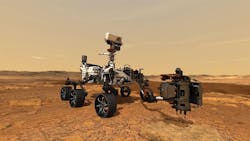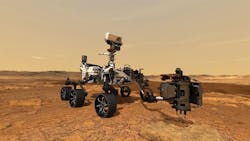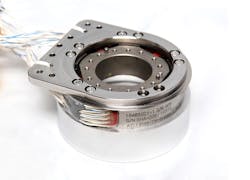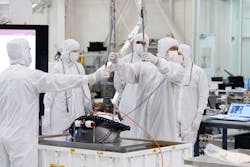ATI develops space-rate force/torque sensor for Mars rover
ATI Industrial Automation worked with NASA’s Jet Propulsion Laboratories (JPL) to develop a custom force/torque sensor for Perseverance, the latest Mars 2020 Rover project. JPL is the US research entity for robotic exploration of our solar system and manages NASA’s Deep Space Network telecommunication system. The Mars 2020 mission is a collaborative effort undertaken by NASA, JPL and other organizations commissioned to develop new technology to explore the surface of Mars.
According to ATI, JPL needed an automated system for collecting and handling space material as well as moving it through the indexing process. To accomplish this, engineers developed the Adaptive Caching Assembly, an application that resembles a pick and place operation commonly found on a factory floor.
The Sample Caching Subsystem consists of the Adaptive Caching Assembly, a large robotic arm with a drill and an assortment of drill bits used to collect samples from designated areas on the surface of Mars. Once collected, a small robotic arm, known as the Sample Handling Assembly or SHA, inspects and seals the samples in the rover’s on-board laboratory.
An ATI force/torque sensor integrated within the SHA end effector assembly provides enhanced responsiveness. With force sensing from ATI, the SHA is equipped to maneuver through the tight workspace, performing tasks with accuracy.
To deliver a force sensing solution for the Perseverance project, ATI adapted their force/torque sensor technology to offset the wide range of environmental conditions. The sensor from ATI has a new design that provides signal redundancy and compensates for temperature variation. This sensor is thermally calibrated. To develop and test these breakthrough features, the ATI engineering team designed specialized calibration equipment and conducted 24-hour surveillance of product trials.
Components made of thermally-stable, low-outgassing materials were added to fortify the sensor against the environmental fluctuations. These materials also prevent cross-contamination of samples during the mission.
After years of development, the anticipated Mars 2020 Rover is fully assembled and ready to begin its mission. Perseverance is set to launch on July 30, 2020 from Cape Canaveral, Florida and will arrive at Mars in February of 2021.




